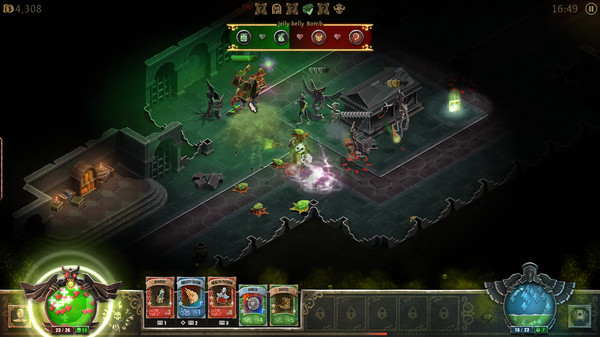The goal here is to remove duplicate entries from the PATH variable.
But before I begin, let’s be clear: there’s no compelling reason to
to do this. The shell will, in essence, ignore duplicates PATH entries;
only the first occurrence of any one path is important.
Two motivations drive this exercise.
The first is to look at an awk one-liner that initially
doesn’t really appear to do much at all.
The second is to feed the needs of those who are annoyed by
such things as having duplicate PATH entries.
I first had the urge to do this when working with Cygwin.
On Windows, which puts almost every executable in a different
directory, your PATH variable quickly can become overwhelming,
so removing duplicates makes it slightly less confusing
when you’re trying to decipher what’s actually in your PATH variable.
Your first thought about how to this might be to break up the path
into the individual elements with sed and
then pass that through sort and uniq to get rid of duplicates.
But you’d quickly realize that that doesn’t work, since you’ve
now reordered the paths, and you don’t want that. You want to keep
the paths in their original order, just with duplicates removed.
The original idea for this was not mine. I found the basic
code for it on the internet. I don’t remember exactly where, but
I believe it was on Stack Exchange.
The original bash/awk code was something like this:
PATH=$(echo $PATH | awk -v RS=: -v ORS=: ‘!($0 in a) ‘)
And it’s close. It almost works, but before looking at the output,
let’s look at why/how it works.
To do that, first notice the -v options. Those set the input
and output Record Separator variables that awk uses to separate
the input data into individual records of data
and how to reassemble them on output.
The default is to separate them by newlines—that is, each
line of input is a separate record.
Instead of newlines, let’s use colons as the separators,
which gives each of the individual paths in the PATH variable
as a separate record.
You can see how this works in the following where you change only
the input separator and leave the output separator as the newline,
and come up with a simple awk one-liner to print each of the elements
of the path on a separate line:
$ cat showpath.sh
export PATH=/usr/bin:/bin:/usr/local/bin:/usr/bin:/bin
awk -v RS=: ” <<<$PATH
$ bash showpath.sh
/usr/bin
/bin
/usr/local/bin
/usr/bin
/bin
So, back to the original code.
To help understand it, let’s make it look at bit more awkish by reformatting
it so that it has the more normal pattern { action }
or condition { action } look to it:
!($0 in a) {
a[$0];
print
}
The condition here is !($0 in a).
In this, $0 is the current input record, and a is an awk variable
(the use of the in operator, tells you that a is an array).
Remember, each input record is an individual path from the PATH variable.
The part inside the parentheses, $0 in a tests to see if the path
is in the array a.
The exclamation and the parentheses are to negate the condition.
So, if the current path is not in a, the action executes.
If the current path is in a, the action doesn’t execute,
and since that’s all there is to the script, nothing happens in that case.
If the current path is not in the array,
the code in the action uses the path as a key to
reference into the array.
In awk, arrays are associative arrays, and referencing a
non-existent element in an associate array automatically creates
the element.
By creating the element in the array, you’ve now set the array so
that the next time you see the same path element, your condtiion !($0 in a)
will fail and the acton will not execute.
In other words the action will execute only the first time that you see a path.
And finally, after referencing the array, you print the current path,
and awk automatically adds the output separtor.
Note that an empty print is equivalent to print $0.
Let’s see it in action:
$ cat nodupes.sh
export PATH=/usr/bin:/bin:/usr/local/bin:/usr/bin:/bin
echo $PATH | awk -v RS=: -v ORS=: ‘!($0 in a) ‘
$ bash nodupes.sh
/usr/bin:/bin:/usr/local/bin:/bin
:
As I said, it almost works.
The only problem is there’s an extra newline and an extra colon on
the following line.
The extra newline comes from the fact that echo is adding a newline
onto the end of the path, and since awk is not treating newlines as
separators, it gets added to the end of the last path,
which, in this case, causes it to look like awk failed to remove a duplicate.
But awk doesn’t see them as duplicates, it sees
/bin and /binn.
You can eliminate the trailing newline by using the -n option to echo:
$ cat nodupes2.sh
export PATH=/usr/bin:/bin:/usr/local/bin:/usr/bin:/bin
echo -n $PATH | awk -v RS=: -v ORS=: ‘!($0 in a) ‘
$ bash nodupes2.sh
/usr/bin:/bin:/usr/local/bin:
And you’re almost there, except for the trailing colon, which is not actually
a problem. Empty PATH elements will be ignored, but since you’ve come this
far on this somewhat pointless journey, you might as well go the distance.
To fix the problem, use awk’s printf command rather than print.
Unlike print, printf does not automatically include output record separators,
so you have to output them yourself:
$ cat nodupes3.sh
export PATH=/usr/bin:/bin:/usr/local/bin:/usr/bin:/bin
echo -n $PATH | awk -v RS=: ‘!($0 in a) ‘
$ bash nodupes3.sh
/usr/bin:/bin:/usr/local/bin
You may be a bit confused by this at first glance.
Rather than eliminating the trailing separtor,
you’ve reversed the logic, and you’re outputting the separator first,
then the PATH element, so instead of needing to eliminate the
trailing separator, you need to suppress a leading separator.
The record separator is output by the first %s format specifier
and comes from the length(a) > 1 ? “:” : “”,
so it is only printed when there’s more than one element in the array
(that is, the second and subsequent times).
As I said at the outset, there’s no reason you have to remove
duplicate path entries; they cause no harm.
However, for some, the simple fact that they are there is
reason enough to eliminate them.
Source



